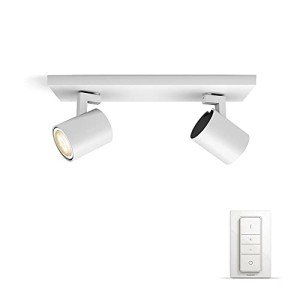
Buy Floor Lamps UK
FollowOverview
-
Sectors Office Manager
-
Posted Jobs 0
-
Viewed 20
Company Description
The 10 Scariest Things About Traditional Lighting UK
Traditional Lighting in the UK: A Comprehensive Overview
Traditional lighting holds a treasured location in the homes and public spaces of the United Kingdom. With its capability to stimulate fond memories, appeal, and heat, traditional lighting fixtures offer not just aesthetic appeal but also practical worth. This article looks into the numerous types of traditional lighting common in the UK, their history and evolution, popular styles, and how to incorporate them into modern decoration.
A Historical Perspective on Traditional Lighting
The advancement of lighting in the UK has been comprehensive. From the flickering flames of candles and oil lamps to the advent of gas and electrical lights, the journey is as interesting as it is informing.
Key Milestones in Lighting History:
- Candles (Before 1800s): The earliest form of artificial light, using tallow or beeswax.
- Oil Lamps (Late 18th Century): These ended up being popular in homes and theaters, supplying brighter lighting than candle lights.
- Gas Lighting (Early 19th Century): Revolutionized public and street lighting before electricity took precedence.
- Electric Lighting (Late 19th Century): Marked the shift to modernity, with incandescent bulbs gradually replacing older kinds.
Each of these advancements paved the method for traditional lighting, which still includes ancient methods into contemporary designs.
Kinds Of Traditional Lighting
Traditional lighting can be classified into numerous unique types, each with its unique attributes.
1. Chandeliers
Chandeliers are often the centerpiece of a room. They come in various styles, from elaborate Victorian designs to basic, rustic designs.
Popular Features:
- Crystal decorations
- Iron structure
- Different bulb types
2. Wall Sconces
Wall sconces offer both artistic style and soft lighting. They can be used in hallways, living rooms, or restrooms, enhancing the environment of an area.
Common Styles:
- Candle-style sconces
- Brass or iron fixtures
- Vintage-inspired designs
3. Table Lamps
Table lamps embody the adaptability of traditional lighting as they can suit any room. Varying from basic designs to ornate pieces, they are perfect for checking out nooks, side tables, or desks.
4. Floor Lamps
Comparable to table lamps in design and function, floor lamps can produce comfortable corners in a home. Vintage designs typically include tripod bases or complex patterns.
5. Lanterns
Though frequently connected with outdoor settings, traditional lanterns can also be utilized indoors for a rustic touch. They come in different materials consisting of wood and metal.
Including Traditional Lighting into Modern Decor
In a world significantly leaning towards minimalism and modern designs, traditional lighting still holds its ground. The secret is to keep a balance. Here are some pointers for integrating traditional lighting into a contemporary home:
1. Mix Styles
Integrate traditional lighting with modern furniture to develop a diverse room. For example, a vintage chandelier can be hung above a streamlined dining table.
2. Use Dimmer Switches
To manage the atmosphere, install dimmer switches that permit soft lighting, which matches both traditional and modern interiors.
3. Choose for Mixed Materials
Select lighting fixtures that integrate different materials, such as a wood lamp with a metal or glass base, to bridge the gap in between old and brand-new.
4. Highlight Architectural Features
Use traditional fixtures to highlight special architectural functions in your home. For circumstances, hanging a vintage lantern in a hallway with exposed brick boosts its rustic appeal.
5. Include Natural Elements
Select styles that incorporate natural materials such as wood or wrought iron. These components tend to blend well with modern design while keeping a traditional style.
Table: Comparison of Traditional Lighting Types
| Lighting Type | Description | Common Materials | Normal Settings |
|---|---|---|---|
| Chandeliers | Decorative ceiling fixtures, typically ornate | Crystal, metal | Dining-room, ballrooms |
| Wall Sconces | Installed fixtures that supply ambient light | Brass, iron | Hallways, living rooms |
| Table Lamps | Portable lamps for tables and desks | Glass, ceramic | Bed rooms, workplaces |
| Floor Lamps | Standalone lamps for corner lighting | Wood, metal | Living rooms, dens |
| Lanterns | Rustic or vintage source of lights | Wood, metal | Patios, gardens |
Frequently Asked Questions
1. What is traditional lighting?
Answer: Traditional lighting describes lighting fixture that embody historical or timeless designs, typically identified by the usage of elaborate products, elaborate patterns, and a warm aesthetic.

2. How can I keep traditional lighting fixtures?
Response: Regular dusting and periodic deep cleaning are necessary. For fixtures with glass or crystals, utilize a moderate glass cleaner. For metal elements, guarantee you utilize proper cleaning services that will not harm the finish.
3. Are traditional lighting fixtures energy-efficient?
Answer: Many traditional fixtures can accommodate modern LED bulbs, which use better energy performance. Constantly inspect compatibility when switching to LED choices.
4. Can I blend traditional lighting with modern design?
Response: Yes, blending traditional lighting with modern décor can create a distinctively welcoming space. Balance is important; choose complementary designs to maintain visual harmony.
5. What is the finest method to select traditional lighting for my home?
Response: Consider your home’s overall style, the function of the area, and personal taste. Take measurements to guarantee suitable sizing and choose products and colors that balance with existing decoration.
Traditional Lighting UK lighting acts as an enduring link to history, craftsmanship, and aesthetics, proving that timeless designs have their rightful location, even amid developing trends. Comprehending the various types of traditional lighting and their application can assist house owners produce welcoming spaces that reflect both sophistication and heat, seamlessly blending the past with the present.

